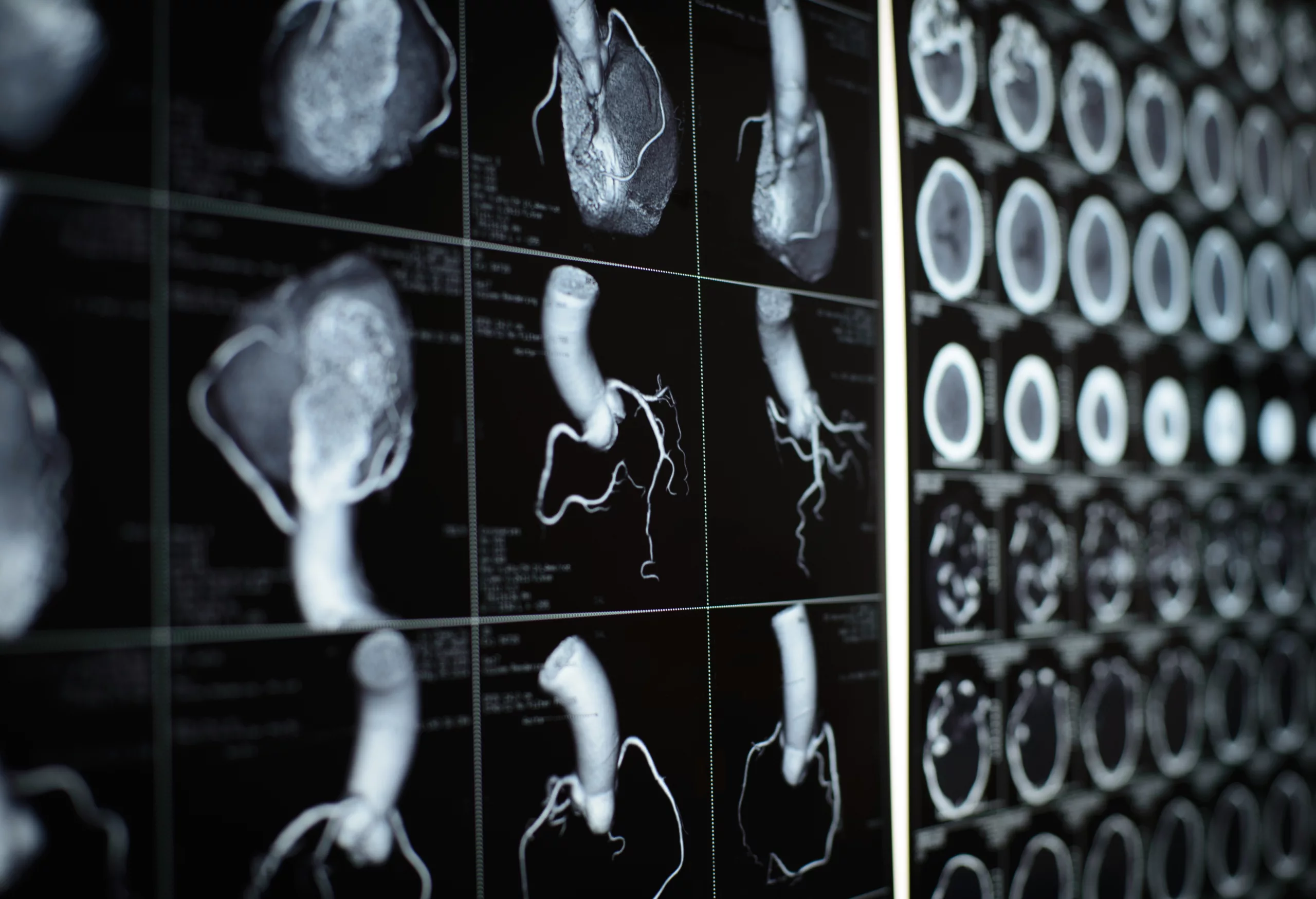
Coronary artery disease (CAD) is the most common type of heart disease in the United States. It occurs when the major blood vessels to the heart are unable to send enough blood, oxygen, and nutrients to your heart muscle. When blood flow to the heart becomes completely blocked, CAD can lead to a heart attack.
CAD affects an estimated 20.1 million adults aged 20 and older and contributed to 382,820 deaths in 2020. Knowing the symptoms and causes of this heart condition can help you reduce your risk and stay safe and healthy.
Symptoms of Coronary Artery Disease
Symptoms of CAD usually go unnoticed until the blood vessels to your heart become blocked and cause a heart attack. CAD develops slowly over years, which can make it difficult for you to know whether you have this condition.
Chest pain, also known as angina, is the most common symptom of CAD. This sensation may feel like burning, tightness, squeezing, or pressure in the chest, similar to that which occurs when you have indigestion or heartburn. Pain may be felt in the middle or left side of the chest and usually goes away within minutes.
Other symptoms of CAD include:
- Shortness of breath
- Fatigue, or extreme tiredness
- Pain in the arms or shoulders
- Dizziness
- Sweating
- Nausea and vomiting
- Jaw pain
- Abnormal heart rate
- Heart attack
Causes of Coronary Artery Disease
CAD begins with atherosclerosis. Atherosclerosis is a condition in which substances, including fats and cholesterols, build up on the inner walls of the arteries in your heart. This buildup, known as plaque, can narrow your arteries and block blood flow to the heart. Over time, atherosclerosis can lead to blood clots and heart attacks.
Your coronary arteries can become damaged in other ways and increase the risk for CAD. Risk factors for CAD include:
- Type 2 diabetes
- High blood pressure
- High blood cholesterol
- Physical inactivity
- Excess weight and obesity
- Smoking
- Poor nutrition
- Obstructive sleep apnea
- Chronic stress
- Heavy alcohol use
- History of preeclampsia
- Family history of heart disease
- Chronic kidney disease
- High triglycerides
- High levels of homocysteine (an amino acid)
- High levels of high-sensitivity C-reactive protein (hs-CRP)
- Too much sleep or too little sleep
- Certain autoimmune conditions, such as lupus or rheumatoid arthritis
Your doctor can review your medical history, talk to you about your lifestyle, and run one or more tests to determine whether you may be at risk for CAD.
Diagnosing Coronary Artery Disease
Doctors can diagnose CAD by reviewing your medical history, performing a physical exam, and running one or more diagnostic tests.
Electrocardiogram (ECG)
An ECG can be used to monitor your heart rate to reveal whether it may be too fast or too slow. The patterns produced by an ECG can show whether you have had or are having a heart attack. ECGs are fast and painless tests and one of the most common ways to diagnose CAD.
Echocardiogram
An echocardiogram uses ultrasound waves to create pictures of your heart. This test can show how efficiently blood is moving through your heart, which can help your doctor identify whether parts of your heart have been affected by poor oxygen flow or a heart attack.
Exercise Stress Test
A stress test may be used to diagnose CAD if your symptoms usually occur during exercise. During this test, your doctor will monitor your heart while you exercise on a treadmill or stationary bike. This test measures the stress being placed on your heart while you are resting and exercising.
Heart CT Scan
During a heart CT scan, your doctor will look for calcium deposits in your heart arteries that are causing them to narrow. In some instances, a special dye may be injected into your arteries to provide a clearer view of the insides of your arteries.
Cardiac Catheterization
Cardiac catheterization involves placing a catheter into a blood vessel in your groin or wrist that leads to your heart. Your doctor then injects a special dye into the catheter that can show plaque buildup and blockages in your heart arteries.
Treatments for Coronary Artery Disease
CAD can be treated by making a series of healthy lifestyle changes that naturally reduce plaque buildup and unblock your heart arteries. Quitting smoking, reducing your alcohol intake, and exercising regularly are some of the many ways to treat CAD and reduce your risk for this condition. In some instances, medications and surgery may be needed to treat CAD.
Medications for CAD include, but are not limited to:
- Aspirin, which can thin the blood and prevent blood clots
- Beta-blockers, which can reduce blood pressure and slow heart rate
- Cholesterol drugs, like statins, which can reduce “bad” LDL cholesterol and plaque buildup in the arteries
- Calcium channel blockers, which may reduce chest pain
- Angiotensin-converting enzyme (ACE) inhibitors, which may reduce high blood pressure
- Nitroglycerin, which can reduce chest pain and widen the heart arteries
Surgery may be performed to treat CAD if lifestyle changes and medications do not improve your condition. Surgery can widen blocked arteries, restore blood flow to the heart, and/or stimulate the formation of new blood vessels that can bypass blocked arteries.
Contact your healthcare provider if you are experiencing symptoms of CAD or meet one or more risk factors for CAD. Your provider can perform an exam, run the necessary tests, and talk to you in greater detail about your available treatment options.